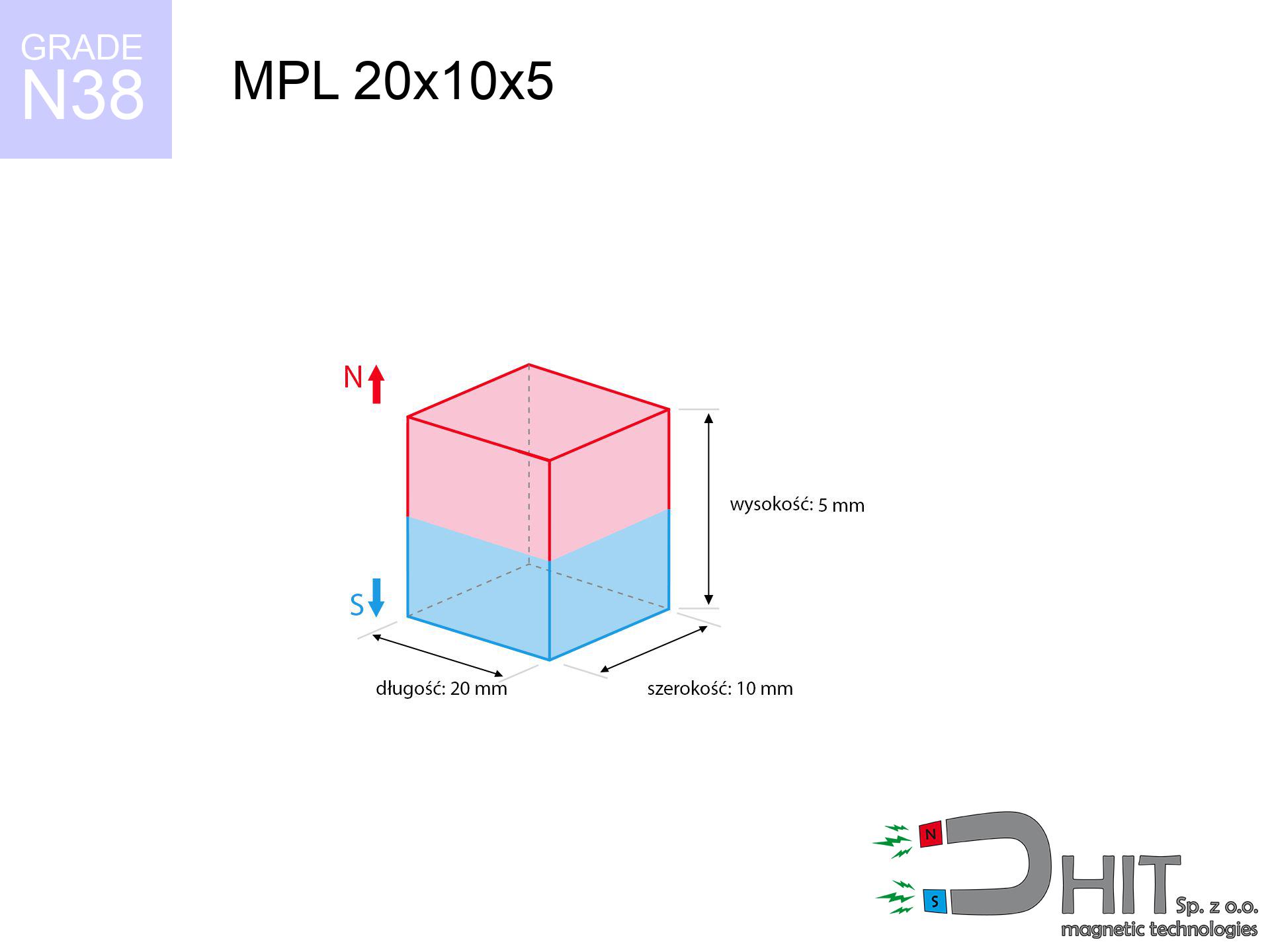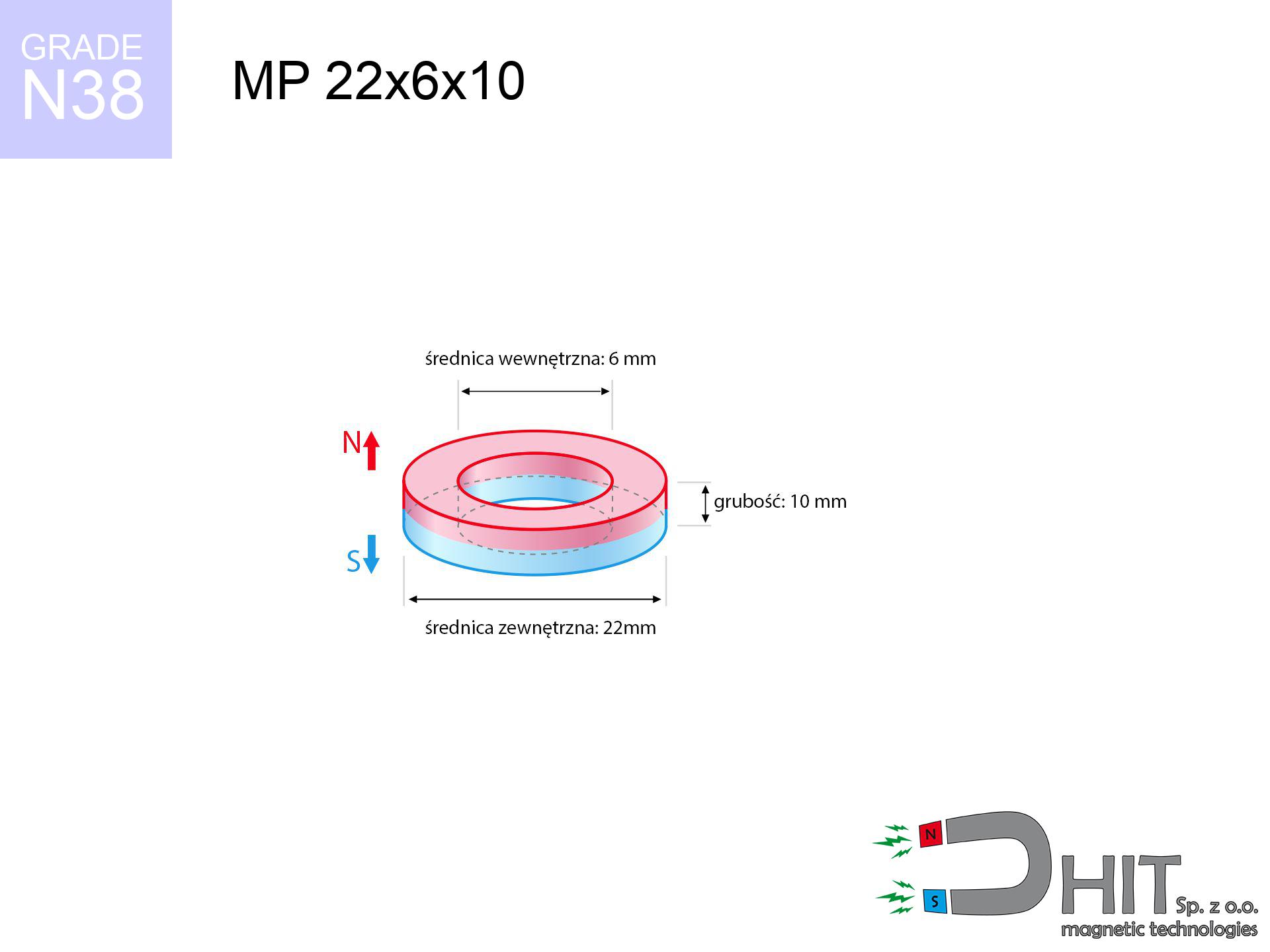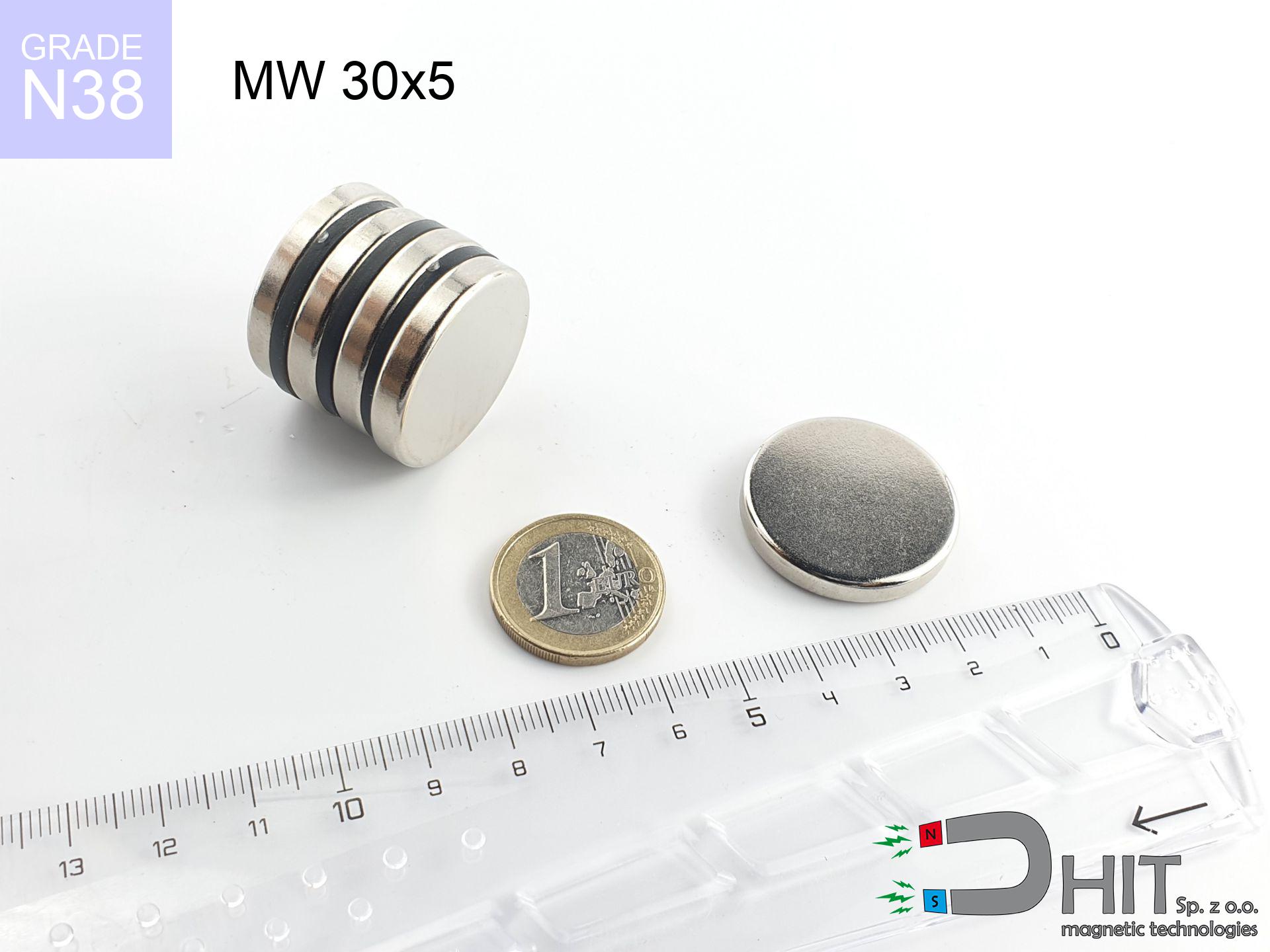MPL 20x10x5 / N38 - lamellar magnet
lamellar magnet
Catalog no 020128
GTIN: 5906301811343
length [±0,1 mm]
20 mm
Width [±0,1 mm]
10 mm
Height [±0,1 mm]
5 mm
Weight
7.5 g
Magnetization Direction
↑ axial
Load capacity
5.58 kg / 54.72 N
Magnetic Induction
349.47 mT
Coating
[NiCuNi] nickel
4.54 ZŁ with VAT / pcs + price for transport
3.69 ZŁ net + 23% VAT / pcs
bulk discounts:
Need more?Looking for a better price?
Call us
+48 22 499 98 98
if you prefer send us a note through
contact form
the contact section.
Force and shape of a neodymium magnet can be estimated on our
magnetic mass calculator.
Orders submitted before 14:00 will be dispatched today!
Magnetic properties of material N38
Physical properties of sintered neodymium magnets Nd2Fe14B at 20°C
Shopping tips
Strengths as well as weaknesses of neodymium magnets.
Besides their remarkable magnetic power, neodymium magnets offer the following advantages:
- Their magnetic field is durable, and after around 10 years it decreases only by ~1% (theoretically),
- Neodymium magnets are characterized by exceptionally resistant to magnetic field loss caused by magnetic disturbances,
- A magnet with a metallic gold surface has better aesthetics,
- Neodymium magnets generate maximum magnetic induction on a their surface, which ensures high operational effectiveness,
- Due to their durability and thermal resistance, neodymium magnets can operate (depending on the form) even at high temperatures reaching 230°C or more...
- In view of the possibility of free molding and customization to custom projects, NdFeB magnets can be produced in a variety of shapes and sizes, which increases their versatility,
- Huge importance in modern industrial fields – they are used in data components, electric motors, advanced medical instruments, also technologically advanced constructions.
- Relatively small size with high pulling force – neodymium magnets offer impressive pulling force in compact dimensions, which enables their usage in small systems
Disadvantages of neodymium magnets:
- They are prone to damage upon too strong impacts. To avoid cracks, it is worth protecting magnets in special housings. Such protection not only protects the magnet but also increases its resistance to damage
- When exposed to high temperature, neodymium magnets suffer a drop in power. Often, when the temperature exceeds 80°C, their power decreases (depending on the size, as well as shape of the magnet). For those who need magnets for extreme conditions, we offer [AH] versions withstanding up to 230°C
- Due to the susceptibility of magnets to corrosion in a humid environment, we advise using waterproof magnets made of rubber, plastic or other material stable to moisture, when using outdoors
- Limited possibility of making nuts in the magnet and complicated forms - recommended is casing - mounting mechanism.
- Possible danger resulting from small fragments of magnets can be dangerous, in case of ingestion, which is particularly important in the context of child safety. Furthermore, small elements of these products are able to complicate diagnosis medical when they are in the body.
- High unit price – neodymium magnets are more expensive than other types of magnets (e.g. ferrite), which can limit application in large quantities
Breakaway strength of the magnet in ideal conditions – what affects it?
Holding force of 5.58 kg is a measurement result performed under the following configuration:
- using a base made of mild steel, functioning as a magnetic yoke
- possessing a massiveness of at least 10 mm to ensure full flux closure
- with an polished contact surface
- with zero gap (no impurities)
- for force acting at a right angle (in the magnet axis)
- in neutral thermal conditions
What influences lifting capacity in practice
In practice, the real power is determined by several key aspects, presented from the most important:
- Gap between magnet and steel – every millimeter of distance (caused e.g. by veneer or unevenness) significantly weakens the pulling force, often by half at just 0.5 mm.
- Angle of force application – maximum parameter is reached only during perpendicular pulling. The shear force of the magnet along the surface is usually many times smaller (approx. 1/5 of the lifting capacity).
- Plate thickness – too thin steel causes magnetic saturation, causing part of the power to be lost to the other side.
- Material composition – not every steel reacts the same. Alloy additives worsen the interaction with the magnet.
- Surface condition – ground elements guarantee perfect abutment, which increases force. Rough surfaces reduce efficiency.
- Temperature – temperature increase results in weakening of induction. It is worth remembering the thermal limit for a given model.
* Lifting capacity testing was conducted on a smooth plate of optimal thickness, under perpendicular forces, whereas under parallel forces the load capacity is reduced by as much as 75%. Additionally, even a small distance {between} the magnet’s surface and the plate decreases the holding force.
Safety rules for work with NdFeB magnets
Safe operation
Be careful. Rare earth magnets act from a long distance and connect with massive power, often faster than you can move away.
Magnet fragility
Neodymium magnets are sintered ceramics, which means they are prone to chipping. Clashing of two magnets will cause them cracking into small pieces.
Fire warning
Dust created during grinding of magnets is combustible. Do not drill into magnets without proper cooling and knowledge.
Keep away from computers
Equipment safety: Strong magnets can damage data carriers and delicate electronics (pacemakers, medical aids, timepieces).
Phone sensors
A powerful magnetic field disrupts the operation of magnetometers in smartphones and GPS navigation. Keep magnets close to a smartphone to prevent damaging the sensors.
Physical harm
Risk of injury: The pulling power is so immense that it can cause hematomas, pinching, and even bone fractures. Protective gloves are recommended.
Warning for heart patients
Medical warning: Neodymium magnets can deactivate pacemakers and defibrillators. Stay away if you have medical devices.
Allergic reactions
Warning for allergy sufferers: The Ni-Cu-Ni coating contains nickel. If an allergic reaction occurs, immediately stop working with magnets and use protective gear.
Do not overheat magnets
Watch the temperature. Exposing the magnet above 80 degrees Celsius will ruin its magnetic structure and strength.
Product not for children
Absolutely keep magnets out of reach of children. Ingestion danger is significant, and the consequences of magnets connecting inside the body are tragic.
Danger!
Looking for details? Read our article: Are neodymium magnets dangerous?






![SM 25x275 [2xM8] / N42 - magnetic separator SM 25x275 [2xM8] / N42 - magnetic separator](https://cdn3.dhit.pl/graphics/products/sm-25x275-2xm8-boc.jpg)
![BM 850x180x70 [4x M8] - magnetic beam BM 850x180x70 [4x M8] - magnetic beam](https://cdn3.dhit.pl/graphics/products/bm-850x180x70-4x-m8-mep.jpg)

